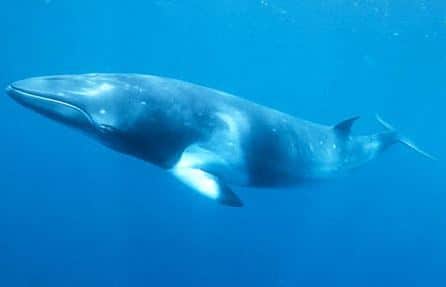CORVALLIS, OREGON — Researchers from Oregon State University (OSU) believe they have identified an unknown sound emanating from deep in the ocean near the Mariana Trench, the deepest known part of the world’s oceans. The previously unidentified sound, which has been dubbed the “Western Pacific Biotwang” by scientists at OSU’s Hatfield Marine Science Center, typically lasts between 2.5 and 3.5 seconds and ranges in frequency, from 38 Hz to 8,000 Hz.
Researchers believe the sound is a whale call, being produced by a dwarf minke whale.
.
“It’s very distinct, with all these crazy parts. The low-frequency moaning part is typical of baleen whales, and it’s that kind of twangy sound that makes it really unique. We don’t find many new baleen whale calls.” –Sharon Nieukirk, lead study author
The ocean recordings were made using passive acoustic ocean gliders, which can travel autonomously for months at a time and dive up to 1,000 meters. According to the researchers, the Western Pacific Biotwang most closely resembles the “Star Wars” sound produced by dwarf minke whales on the Great Barrier Reef off the coast of Australia.
Questions Remain
Despite their belief that the sound is likely coming from the dwarf minke whale, a number of other unanswered questions remain. For example, baleen whale calls are often related to mating and heard primarily during the winter months, yet the Western Pacific Biotwang has been recorded throughout the year.
“If it’s a mating call, why are we getting it year round? That’s a mystery. We need to determine how often the call occurs in summer versus winter, and how widely this call is really distributed.”
Researchers say that more data is needed to confirm the species and gain further insights into how this particular sound is being used. OSU investigators hope to mount an expedition to the area and do acoustic localization, find the animals, and get biopsy samples and find out exactly what’s making the sound.
“It really is an amazing, weird sound, and good science will explain it,” said Nieukurk.
Source: Oregon State University







